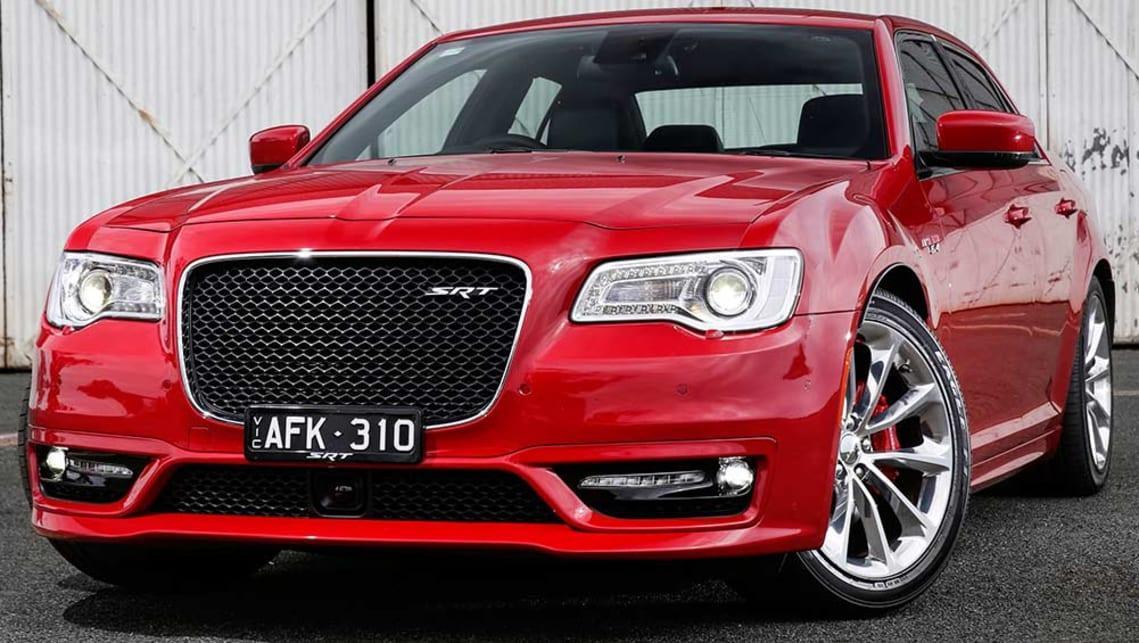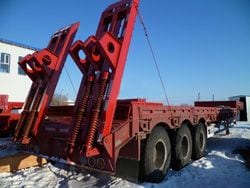
Chrysler 300 SRT 2016 overview
Content
Back in the 1960s and 70s, the Australian family car market was dominated by the so-called Big Three. Always presented in the order of "Holden, Falcon and Valiant", the big six-cylinder V8 cars dominated the local market and were a real battle royale.
Chrysler Valiant fell by the wayside in 1980 when the company was taken over by Mitsubishi, leaving the field to two other companies. Now that has changed with the inevitable demise of the Falcon and Commodore, leaving the big Chrysler in the affordable big sedan segment.
This is a Chrysler 300C that was sold here in 2005 and while it has never been in high demand, everything else about it is big and it is by far one of the most recognizable cars on the road.
The second generation model, released in 2012, was given a mid-life facelift in 2015 with changes including a new honeycomb core with a Chrysler fender badge in the center rather than the top of the grille. There are also new LED fog lights and daytime running lights.
In profile, the characteristic broad shoulders and high waistline remain, but with four new design wheels: 18 or 20 inches. Changes to the rear include a new front fascia design and LED taillights.
Previously available in sedan or station wagon bodystyles and with a diesel engine, the latest 300 line comes only with sedan and petrol engines. Four options: 300C, 300C Luxury, 300 SRT Core and 300 SRT.
As the name suggests, the 300 SRT (by Sports & Racing Technology) is a performance version of the car and we just had a very enjoyable week behind the wheel.
While the Chrysler 300C is the entry-level model priced at $49,000 and the 300C Luxury ($54,000) is the higher-spec model, the SRT variants work the other way around, with the 300 SRT ($69,000) being the standard model and the 300 with the appropriate title. The SRT Core has slashed features but also the price ($59,000K).
The trunk has the correct shape, which makes it easy to transport bulky items.
For that $10,000 savings, Core buyers are missing out on adjustable suspension; satellite navigation; leather trim; seat ventilation; cooled coasters; cargo mat and mesh; and Harman Kardon audio.
More importantly, the SRT gets a number of additional safety features, including blind spot monitoring; Lane Departure Warning; lane keeping system; and Forward Collision Warning. They are also standard on the 300C Luxury.
Both models have 20-inch alloy wheels machined in the Core and forged in the SRT, and Brembo four-piston brakes (black on the Core and red on the SRT).
Design
The Chrysler 300 has enough leg, head and shoulder room for four adults. There is plenty of room in the center of the rear seat for another person, although the transmission tunnel steals a fair amount of comfort in this position.
The trunk can hold up to 462 liters and is properly shaped to carry bulky items with ease. However, there is a long section under the rear window to get to the far end of the trunk. The backrest of the rear seat can be folded 60/40, which allows you to carry long loads.
Features
The Chrysler UConnect multimedia system is centered around an 8.4-inch touchscreen color monitor located in the center of the dashboard.
ENGINES
The 300C is powered by a 3.6 liter Pentastar V6 petrol engine with 210 kW and 340 Nm of torque at 4300 rpm. Under the hood of the 300 SRT is a huge 6.4-liter Hemi V8 with 350kW and 637Nm.
While Chrysler doesn't give numbers, it's likely that the 100-XNUMX mph time will take less than five seconds.
Both engines are now mated to a ZF TorqueFlite eight-speed automatic transmission, which is especially welcome in SRT models that previously used the aging five-speed gearbox. The gear selector is a round dial on the center console. Cast paddle shifters are standard on both SRT models.
Not surprisingly, fuel consumption is high. Claimed consumption is 13.0L/100km on the combined cycle, but a reasonable 8.6L/100km on the highway, we averaged just over 15 during the week's test.
Driving
What you hear is what you get when you hit the engine start button on a Chrysler 300 SRT. With a little help from the damper on the two-stage exhaust, the car produces that loud, bold rumble that makes the hearts of muscle car enthusiasts race.
Driver-calibrated launch control allows the driver (preferably an advanced one - not recommended for the inexperienced) to set their preferred launch RPMs, and although Chrysler doesn't give a number, a 100-XNUMX mph time of less than five seconds is likely.
Three driving modes are available: Street, Sport and Track, which adjust steering, stability and traction control, suspension, throttle and transmission settings. They are accessible via the touch screen of the UConnect system.
The new eight-speed transmission is a marked improvement over the previous five-speed transmission - almost always in the right gear at the right time and with very quick shifts.
It takes a while in the city to get used to the sheer size of these big Chryslers. It's a long way from the driver's seat to the front of the car, and you're looking through a very long hood, so the front and rear sensors and rearview camera really make a living.
On the 300 motorway, the SRT is in its element. It provides a smooth, quiet and relaxed ride.
Despite the high traction, this is a big heavy car, so you won't get the same pleasure out of cornering as you would with smaller, more agile cars.
Does the 300 SRT make big looks different from the Commodore and Falcon? Let us know your thoughts in the comments below.
Click here for more 2016 Chrysler 300 pricing and specifications.
